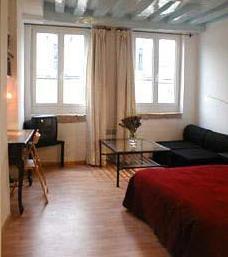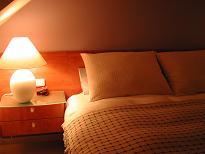|
BARCELONA
TOURIST INFORMATION
The
best way to get to know a city is by walking around its streets.
GOTHIC QUARTER
On foot. Approximate duration: 3 hours.
The
Gothic Quarter is what used to be known ago as the "Cathedral
Quarter". The great gothic buildings which marked the high
point of the city and its culture during the Middle Ages are
to be found here. Here Likewise, are the remains of the ancient
fortified walls and palaces built by the Romans on the "Mons
Taber" such as, the temple dedicatet to Augustus.
Our itinerary begins in the Plaça Nova.
1.
Portal del Bisbe.
Flanked by two round towers from the ancient Roman wall and
on one side of the present Bishop"s Palace.
2.
Palace Episcopal (Bishop's Palace).
Carrer del Bisbe Irurita. Built at the end of the 12th Century
and the beginning of the 13th Century.
3.
Plaça de Sant Felip Neri.
(Past the Bishop's Palace and to the right). One of the most
lyrical places of the city.
4.
Casa del Arcediano o casa de l'Ardiaca.
Carrer de Santa Llùcia. Built on the Roman walls during
the 15th Century as a residence for the Archdeacon of the Cathedral.
The cloister- type patio with is gothic fountain is noteworthy.
5.
Interior of the Cathedral.
Three cruciform aisles and twenty- nine lateral chapels in one
of which Cristo de Lepanto is venerated. Noteworthy: The choirstall
which features both medieval and rennaissance elements.
6.
Cathedral cloisters.
Beautiful central garden with palm-trees and magnolias. Interesting
wrought-iron work.
7.
La Pietat door.
Entry to the Cathedral cloister. Pieta carved in wood, flamenco
school.
8.
Casa de los Canónigos o Casa dels Canonges.
Gothic Building from the 14 Century now restored.
9.
Centre Excursionista de Catalunya.
Carrer Parad's, 10. The Roman columns from the temple dedicated
to Augustus are kept inside.
10.
Palau de la Generalitat.
Gothic building from the 15th Century. Joined to the Casa dels
Canonges by the aforementioned passageway. Orange grove. St.
George Chapel.
11.
Casa de la Ciutat or City Hall.
Next to the Neo-Classical facade (19th Century) there is a lateral
gothic facade (14th Century) and some levely steps. "Saló
de Cròniques" with paintings by Josep Ma. Sert and
the historical "Saló de Cent".
12.
Plaça del Rei.
This is the most handsome section of ancient Barcelona. It a
square outlined by gothic buildings toped by the facade of the
former main Royal Palace and its watchtower- a true skycraper
for the 16th Century.
13.
Casa Clariana-Padellas.
Houses the "Museu d"Història de la Ciutat"
(See Museums).
14.
Palau de Lloctinent.
Ghotic building embellished with rennaissance elements. The
craftmanship of the stairways in worth noting.
15.
Casa de la Pia Almoina or de la Canonja.
Plaça de la Seu, beside the Cathedral. Forner seat of
charitable foundation set up at the beginning of the 11th Century.
16.
Plaça de Ramon Berenguer el Gran.
Equestrian statue in bronze representing Ramon Berenguer III.
GAUDÍ
Antoni
Gaudí i Cornet was born i Reus in 1852. He studied architecture
in Barcelona Provincial School of Architecture. Before finishing
his studies he collaborated with Josep FontserŽ, architect,
in the Citadella Park project. In 1878 he won a contest to carry
out a street lights project for Barcelona"s Plaza Real.
Those street ligths still exist. Between 1883 and 1926 Gaud'
left in Barcelona a sample of ten different and varied works.
Casa
Vicens (1883-1888)
Carolines, 18-24
With a clear oriental influence, the most remarkable characteristic
is the of colors in the facade tyles.
Pabellones
de la Finca Güell (1886-1889)
Av. de Pedralbes, 7
Two pavilions with big fence which was the entrance to the old
leisure time house property of Eusebio Güells family. Eusebio
Güell was Gaudi's proctetor.
Palau
Güell
Nou de la Rambla, 3
Visiting hours: Monday-Sunday: 10-13.30h & 16-19.30h.
Count Güells residence in Barcelona. The interior of the
palace is remarkably rich in details.
Col.legi
de les Teresianes (1888-1890)
Ganduxer, 95-105
Tel. 93-212 33 54 Visiting hours: Saturday 11-13 h. (except.
summer)
Building designed to be used as an educational centre.
Casa
Calvet
Casp, 48
St. Althougt at first sight house does not seem one of Gaudi"s
works, a visit to the entrance hall offers un common details.
Torre
Bellesguard (1900-1904)
Collserola Ridge
Park
Güell (1900-1904)
Olot, s/n.
Tel. 93-213 04 88
Visiting hours: November to Frebuary: 10 am. - 6 pm.
March and October: 10 am.- 7 pm.
April and September: 10 am. - 8 pm.
May to August : 10 am. - 9 pm.
This is Gaudi"s largest work in Barcelona. It is an area
which main aim was to become a british style "garden-city".
Casa
Batlló
P. de Gràcia, 43 Tel. 93 216 03 06 Timetable: Mo-Sa:
9-14h. Su: 9-20h. Christmases, Easter and Summer: Mo-Su: 9-20h.
See Museums.
With a tyled roof and mosaic façade. Gaudí undertook
the total remodelling of this existing building. The result
was an outside façade representing a party comparable
to Carnival. The house is designed with shapes inspired from
natural elements.
Templo Expiatorio de la Sagrada Familia (1883-1926)
Sagrada Familia Square
Tel. 93-455 02 47 Visiting hours: September - March: 9 am. and
7 pm. April - August: 9 am and 8 pm. In 1883 Gaudi accepted
the asignment to continue building temple.
Casa
Milà o "La Pedrera"
Espai Gaudí
Corner between Paseo de Gracia and Provenza.
Visiting hours: Monday-Sunday: 10-20h.
Informaciton: Tel. 93-484 59 95.
Metro: Linea 3 (Diagonal).
Bus: 7,16,17,18, 22, 24, 28
Considered to be the most representative work of Modernism,
it has a breathtaking wavy faade of stone and iron balconies.
|

